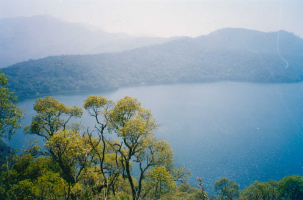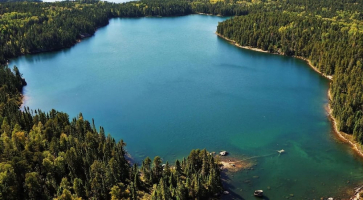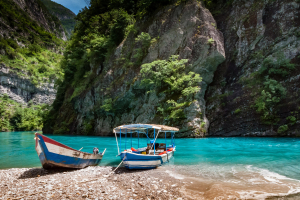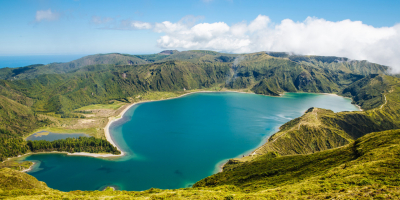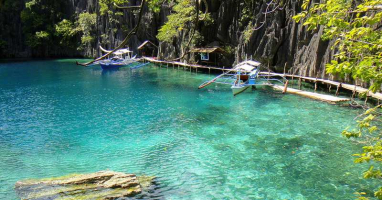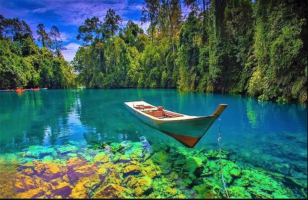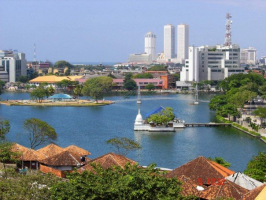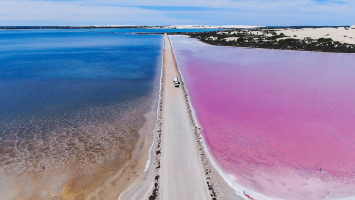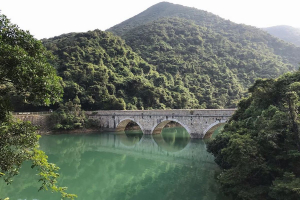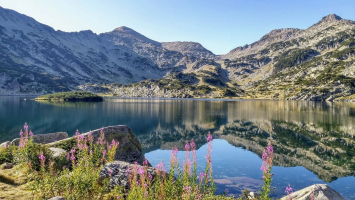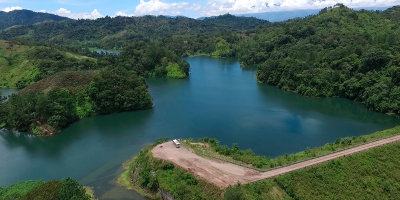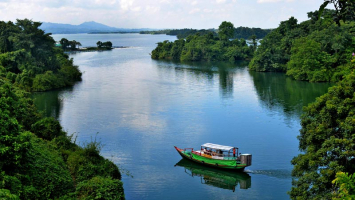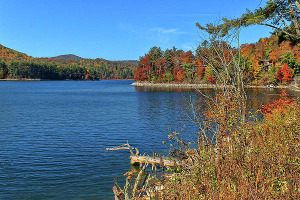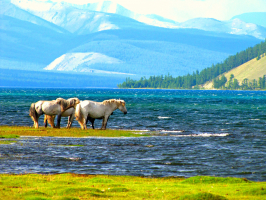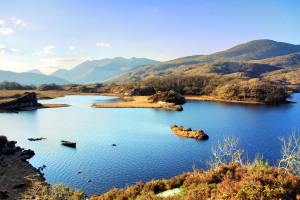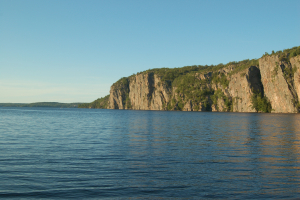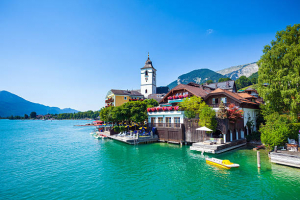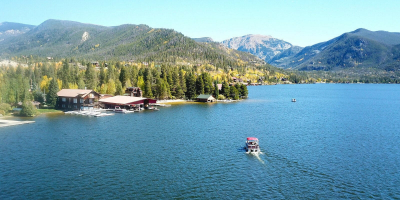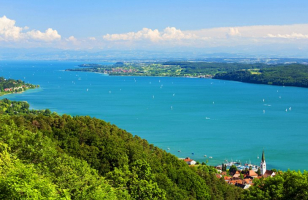Top 10 Most Beautiful Lakes in Nepal
The lakes are the ideal summer destination for those who want a place to relax and cool off without descending to cramped beach destinations. In a beautiful ... read more...country like Nepal, there is no shortage of beautiful lakes. Let's join Toplist to discover the most beautiful lakes in Nepal!
-
Rara, the deepest lake in the Nepalese Himalayas, has an area of 10.8 km2 and is located at a height of 2990 m above sea level. It is one of the most beautiful lakes in Nepal. It drains into the Mugu Karnali River via the Nijar River and is situated in the Jumla and Mugu districts. High PH levels and a freshwater expanse of about 5 and 3 kilometers are characteristics of the water in Rara. It was designated a Ramsar site in 2007 because of its high altitude and proximity to Rara National Park, which has a pine, spruce, and juniper forest.
Rara is developing into the next travel destination on the map as a place to reflect and find peace. There are now significantly more tourists visiting the western Nepali lake of Rara. Every traveler pauses while boating in the crystal-clear waters, going to adjacent hills with unusual views of grand mountains, and taking in the stunning scenery surrounding the lake. Every trekker's enchantment is heightened by the sight of the Himalayan peaks.
September/October and April to May are the best months to visit the lake. It has a very difficult route and is a very well-known destination for trekkers in Western Nepal. The sole means of transportation for visitors to the lake is by air, therefore the adventure starts with a flight from Nepalgunj to Jumla, from which it takes roughly two to three hours to walk to Rara.
Location: Mugu District, Karnali Province
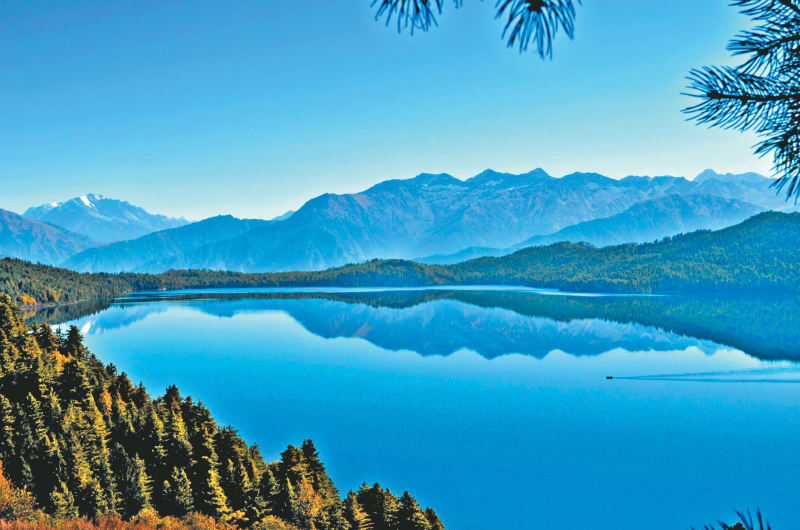
Photo: adventurealternativenepal.com 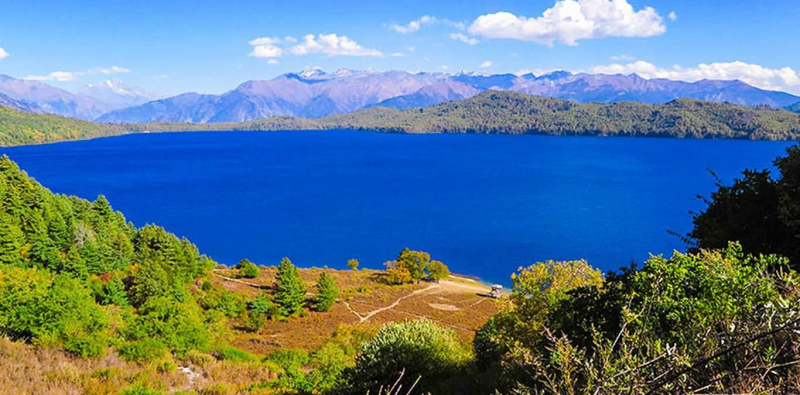
Photo: pinterest.com -
Formerly known as Baidam Tal, Phewa Lake, Phewa Tal, or Fewa Lake is a freshwater lake in Nepal that is situated in the southern portion of the Pokhara Valley, which encompasses Pokhara City and portions of Sarangkot and Kaskikot.
In Pokhara, Phewa Lake has grown in importance from a number of angles. It is a significant location from a social, economic, cultural, and ritualistic standpoint. One of Pokhara's most priceless attractions for the city's expanding tourism industry is Phewa Lake. Tourists are drawn to Phewa Lake, which is Nepal's main tourism destination. It's a really lovely and magical location known for adventurous and enjoyable activities. Boating is the main draw of Phewa Lake. A more enjoyable moment is having bare hands when boating in the pure water.
Additionally, it is well known for its variety of dishes made with lake fish. Visitors come here to sample the mouthwatering fresh fish meals. Around the lake, there are numerous eateries, many of which specialize in serving fish meals. For fishermen who have relied on fishing for their living for many years, the lake has become their place of employment.
Additionally, the lake is well known for reflecting Mount Machhapuchhre and other high peaks from the Annapurna and Dhaulagiri ranges on its surface. The distance between the lake and the Annapurna range in the north is just around 28 kilometers.
Location: Kaski, Nepal
Video: https://www.youtube.com/watch?v=-GAh_PAuoS4 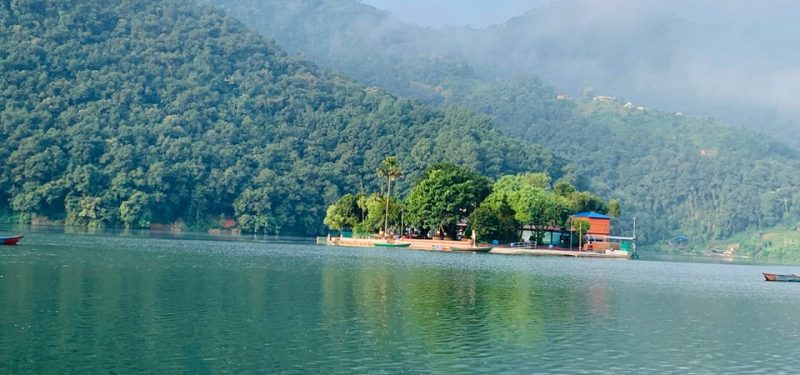
Photo: old.risingnepaldaily.com -
In the southeast of the Pokhara Valley, in the Pokhara Lekhnath Metropolis of Nepal's Kaski district, is a freshwater lake known as Begnas Lake. The lake is the second-largest of the eight lakes in the Pokhara Valley and the third-largest lake in all of Nepal, behind Phewa Lake. The lake's water level varies seasonally as a result of rainfall and irrigation use. Begnas Lake is also one of the most beautiful lakes in Nepal.
This lake is recognized as the second-largest in the Pokhara Valley and the third-largest lake in all of Nepal. It is far from the busy, frenetic pace of the metropolis. It is calm, tidy, and peaceful. Additionally, it is home to a variety of birds that migrated to Nepal around that time. The attractions of this location include freshwater boating, traditional western Nepali culture, and water sports. One of Nepal's most stunning lakes is this one.
The lake offers wonderful natural beauty. The highlight of Begnas Lake is the shadow cast by the nearby hills on the glistening river. One can meditate by taking in nature's unadulterated beauty. Boating is an excellent way to explore the lovely lake and its surroundings.
Location: Kaski, Nepal
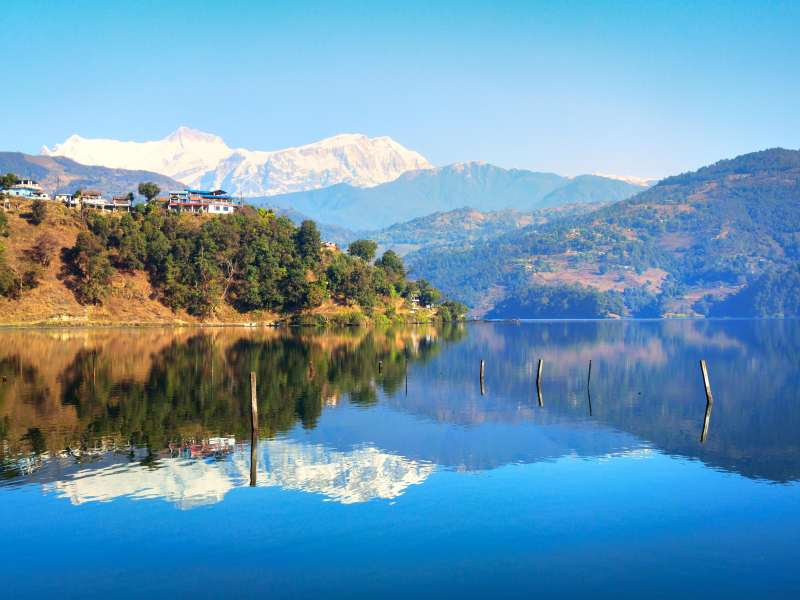
Photo: vn.trip.com 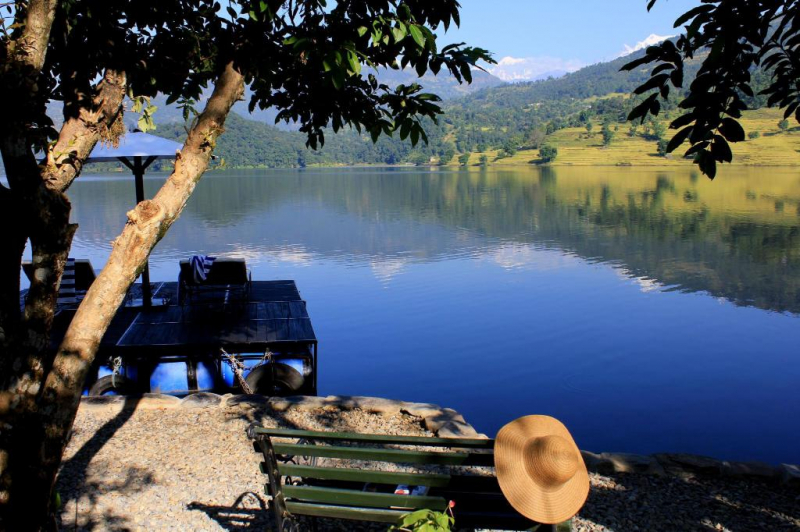
Photo: agoda.com -
The most well-known hiking location in Nepal is Phoksundo Lake, which is located in the Dolpa district at an elevation of 3,611.5m above sea level. It has a surface area of 494 hectares and a water volume of 409,000,000 m3. It was designated a Ramsar site in 2007 and is distinguished by its tasteful turquoise hue. It has one gompa on the eastern side of the lake and 20 stupas in the southern belt, where annual prayers and devotion are held. The lake is well-known for its high-altitude and scenic trekking in Nepal.
It is classified as an oligotrophic lake and can go down 145 meters at its deepest point. It is a picture of unadulterated beauty, surrounded by glaciers fed by mountains, and the spellbinding grandeur of the entire scene leaves every traveler feeling reflective. The settlement of Ringmo, which is located on the southern end of the lake and sits on a landslide dam that dates back between 30,000 and 40,000 years, is thought to be the source of the lake.
The waterfall is also just after the dam. Tibetan culture and languages have an impact on the local population near the lake. Because of the pleasant temperatures and weather, March through May and September through November are the best times to explore Shey Phoksundo Lake.
Location: Dolpa District, Nepal
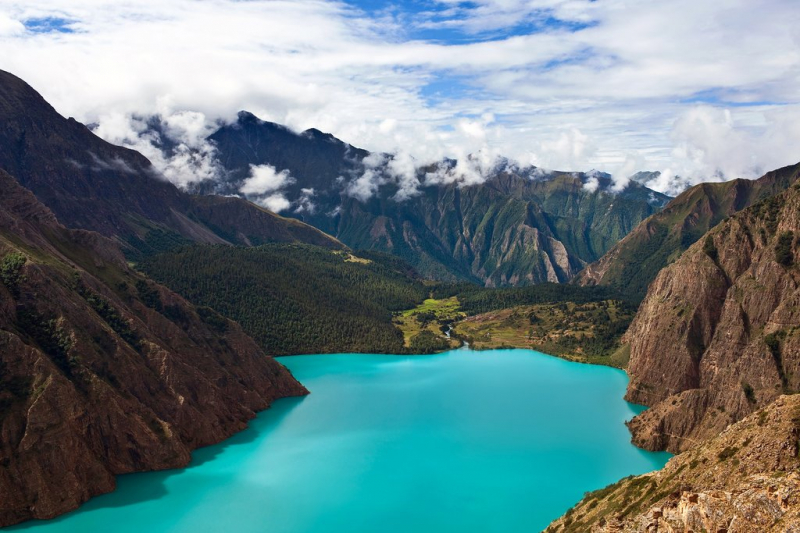
Photo: kimkim.com 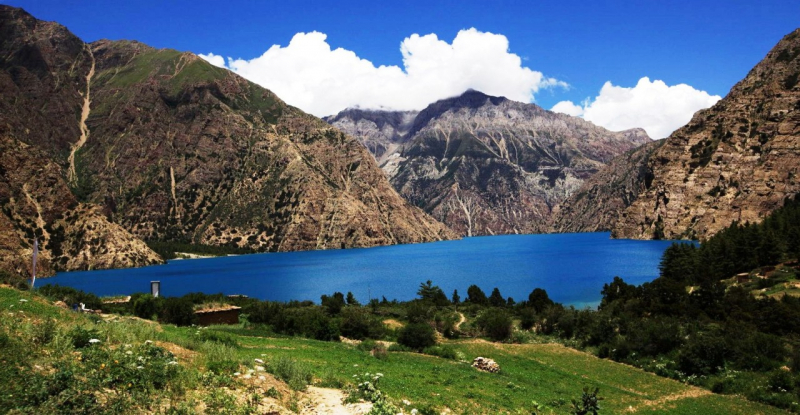
Photo: trekadvisor.com -
A lake called Tilicho Lake is situated in Nepal's Manang district, 55 miles from Pokhara in a straight line distance. It is located in the Himalayan Annapurna range at a height of 4,919 meters. The elevation of Lake Tilicho in Nepal is 4,949 meters above sea level. No aquatic organisms have been identified in the lake, according to the Nepali Department of Hydrology & Meteorology (2003).
The Annapurna range of the Himalayas has the glacial lake known as Tilicho, a popular tourist destination. It is also well-liked for trekking. The Tilicho base camp is reached by hiking the additional 3/ 4 days of the Annapurna Circuit trip in this location. For the adventurer who enjoys pushing the boundaries of geography, Tilicho Lake offers an exciting journey. There are lovely lakes in Nepal and it is one of the top trekking areas in the Himalayas.
Along with its ecological significance, the lake also has a legendary meaning. Hindu legend claims that Tilicho Lake was once known as Kak Bhusundi Lake. Garuda, the king of the birds around the lake, is thought to have received the Ramayana for the first time from the sage Kak Bhusundi.
Location: Annapurna, Manang, Nepal
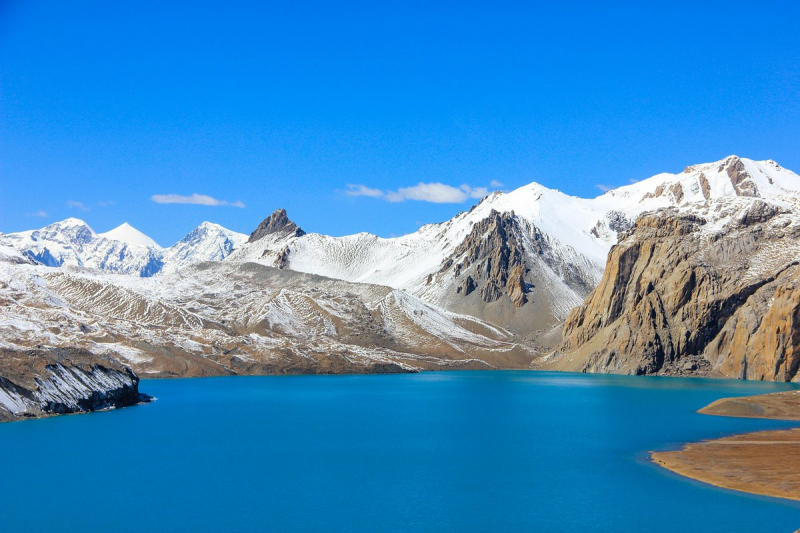
Photo: tripadvisor.com.vn Video: https://www.youtube.com/watch?v=LbArTMSWVmI -
Another lovely lake, Gosaikunda, may be found in the Langtang National Park's Rasuwa district. It has a 4.0 sq km size and is 4,380 m above sea level. It was designated a Ramsar site in 2007 and is 1030 hectares in size. The lake is said to be the source of the Trishuli River, a swift-moving river best known for rafting. It has been portrayed as a Hindu religious location. It is one of Nepal's most stunning lakes that also carries a lot of religious significance.
The frozen lake, also known as Gosaikunda, is a location with significant religious importance. Shiva and Gauri, two Hindu gods, reside in Gosaikunda, according to Hindu mythology. Additionally, it is a well-liked trekking route. Visitors can discover the holy land, wonderfully situated terraced land, Tamang ethnic group settlements, uncommon wild animals, different flora and fauna, and expansive mountain views of Ganesh Himal, Manaslu, among other things, at this location.
It provides a quick glimpse of the varied nature and culture. The lovely, luxuriant forests of rhododendron, oak, pine, and birch, which surround Gosaikunda, let every traveler forget their troubles and pains. Altitude sickness can make it difficult for hikers to ascend the hill. The months of February through May and late September through December are ideal for lake hiking.
Location: Rasuwa district, Nepal
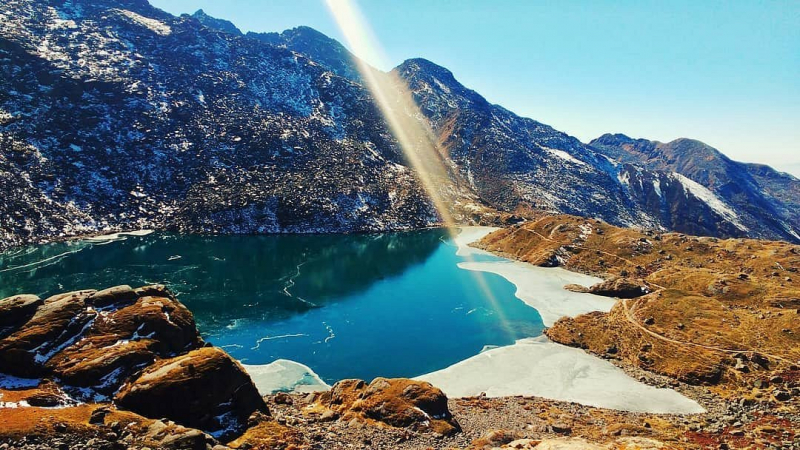
Photo: tripadvisor.com 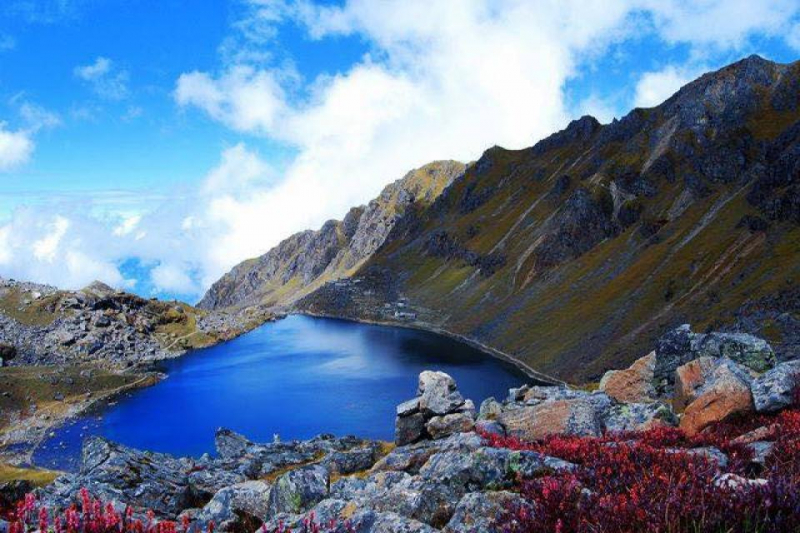
Photo: accenthimalaya.com -
Gokyo Lakes are categorized as oligotrophic lakes and are situated in Sagarmatha National Park at an elevation of 4700–5000 meters above sea level. Six of the 19 lakes in Gokyo Lakes are main lakes, which are thought to be the highest freshwater lakes in the world. In 2007, these lakes were designated as a Ramsar Site.
The most well-known tourist destination is Gokyo Lakes. It offers a fantastic opportunity to view the Ngozumpa glacier, the largest glacier in the Nepal Himalayas, as well as the four enormous Himalayas of the globe that are higher than 8000 meters, including Mount Everest, Lhotse, Cho Oyu, and Makalu. More importantly, it offers the chance to see the Sagarmatha National Park's protected flora and fauna. Amazing Gokyo Valley, sweeping views of Mount Everest and other peaks at sunrise and sunset from Gokyo Ri (5357m), stunning glacier lakes, and views of vivid turquoise high-altitude lakes are the main draws of the areas that will undoubtedly enchant every traveler.
More specifically, because they are sources of steady freshwater, these lakes have enormous hydrological importance. This lake system is thought to be naturally fragile because it is located in an environmentally problematic area. Both Hindus and Buddhists regard the Gokyo lake system as sacred.
Location: Solukhumbu District, Nepal
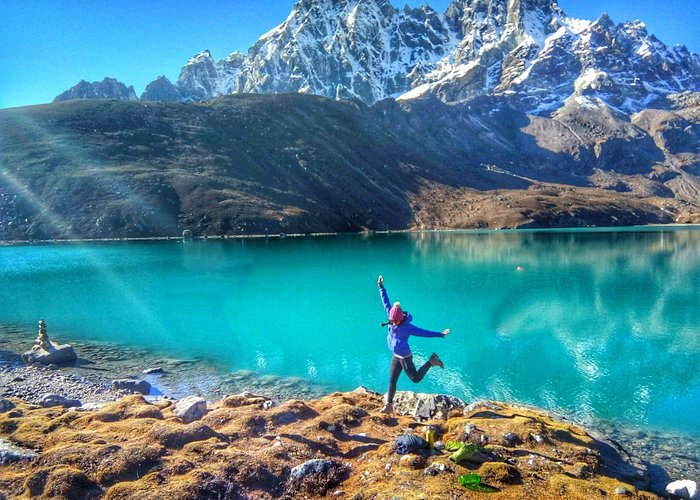
Photo: tripadvisor.com.vn 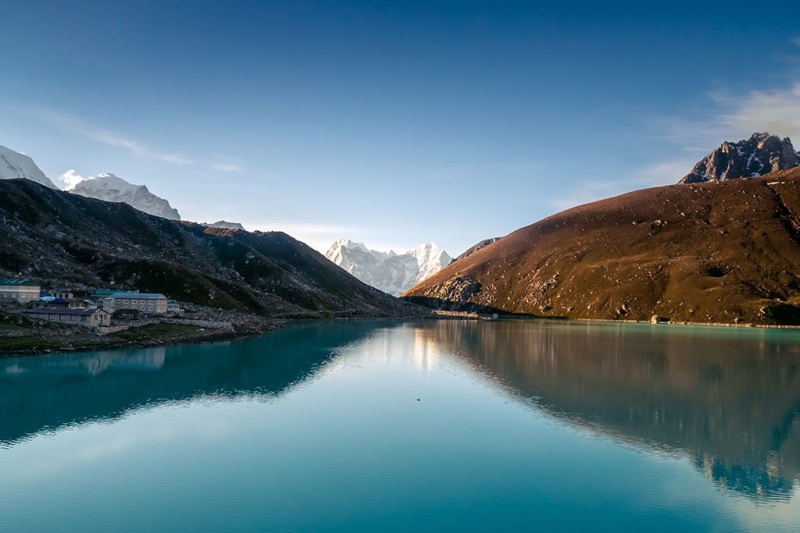
Photo: kimkim.com -
The next position on the list of the most beautiful lakes is Bish Hazari Lake. The city of Bharatpur, located in the southernmost part of Chitwan, is about 5 kilometers distant from Bish Hazari Lake, also spelled Beeshazari lake. Actually, it's a well-known tourist destination that was given the Ramsar designation in 2003. It covers 3200 hectares at a 286 m elevation and is surrounded by the Chitwan National Park.
Above all, it is a sizable oxbow lake, and ardent nature enthusiasts may be overcome by the lake's exquisite beauty. Visitors can experience tremendous calm and delight at this beautiful lake.
It is more well-known for bird watching and jungle safaris because it is home to several endangered species, including one-horned rhinoceroses, Bengal tigers, sloth bears, gharials, crocodiles, and white-rumped vultures. The most important aspect about it is that one can hear incredible sounds of birds and other creatures on the route to this lake. Visit this location to take in and appreciate nature's breathtaking splendor.
Location: Chitwan, Nepal
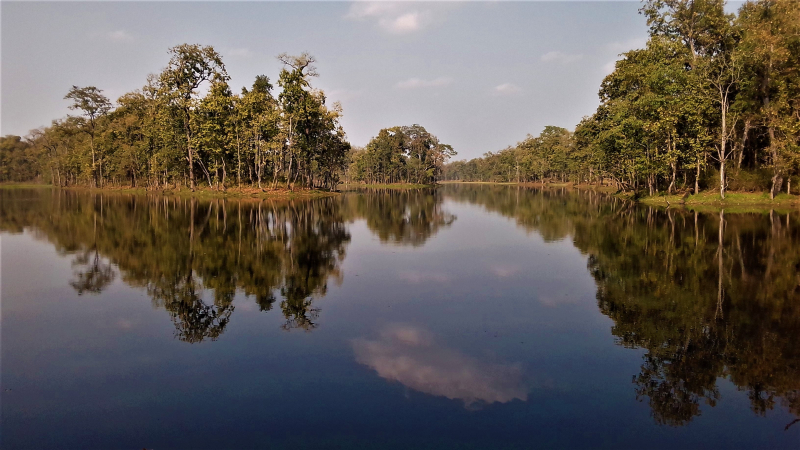
Photo: wikimedia commons 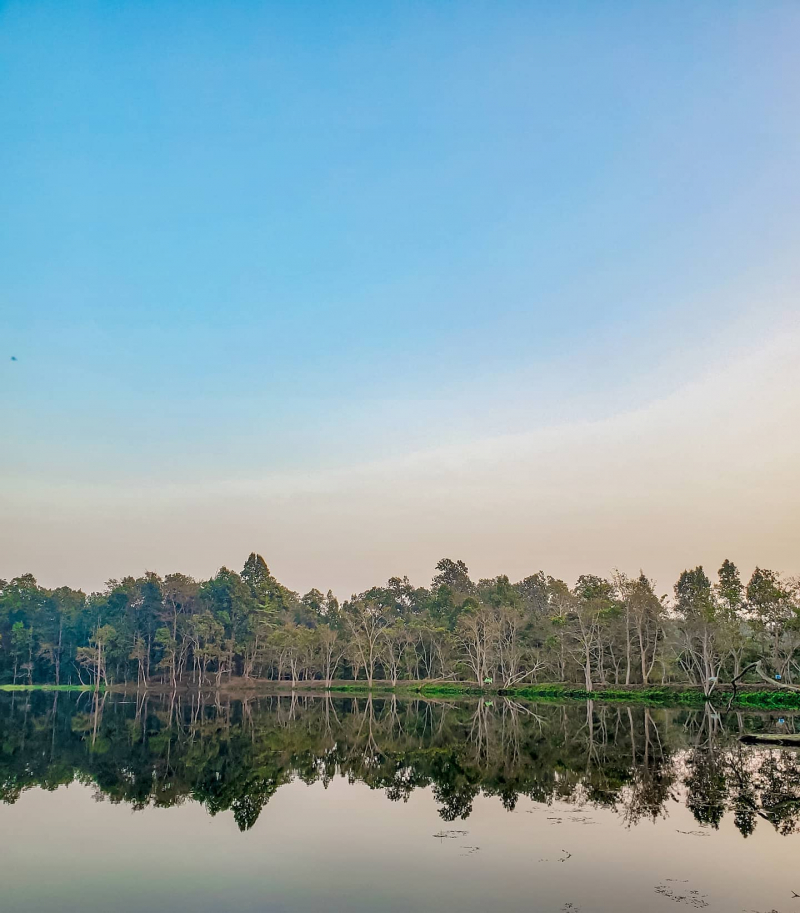
Photo: facebook.com -
Ghodaghodi Lake, which lies 205 meters above sea level in the Kailali district, was designated a Ramsar site in 2003 due to its importance to biodiversity and to religion. On the lower slopes of the Siwalik hills, it spans a region of 2563 hectares. 13 big, oxbow lakes and ponds, along with meadows and marshes, make up this wetland. In plainer terms, Ghodaghodi Lake is thought to be the Far Western Terai's flatland's most priceless gem.
From the viewpoint of tourists, it is a location of enormous significance. It is quite enjoyable to go boating on this lake's crystal blue water. Similar to how one can get solace after viewing diverse bird species. The highlight of this lake is the wonderful vista of this wetland, along with its amazing surroundings, fauna, and numerous plant types. The Ghodaghodi lake's picturesque scenery entices visitors to return time and time again.
In addition to being valuable for biodiversity, it has religious significance. People bathe in a temple on special occasions. The native Tharu community observes their traditional holiday known as Agan Panchami in December by worshipping and presenting the animals in the temple
Location: Kailali, Nepal
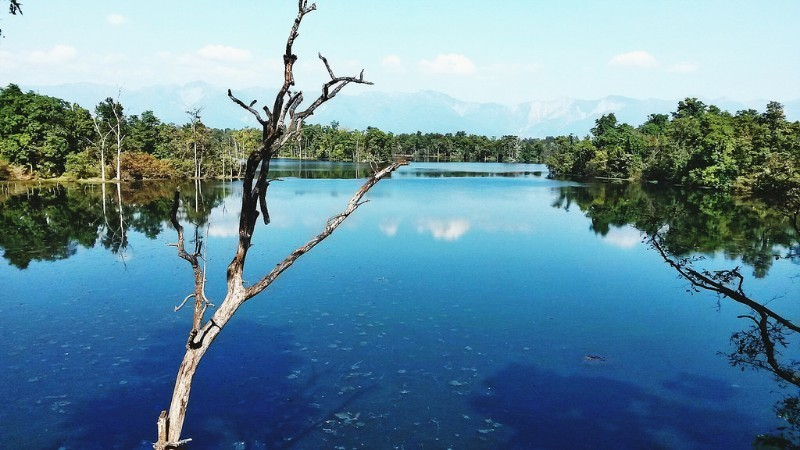
Photo: khojnu.com 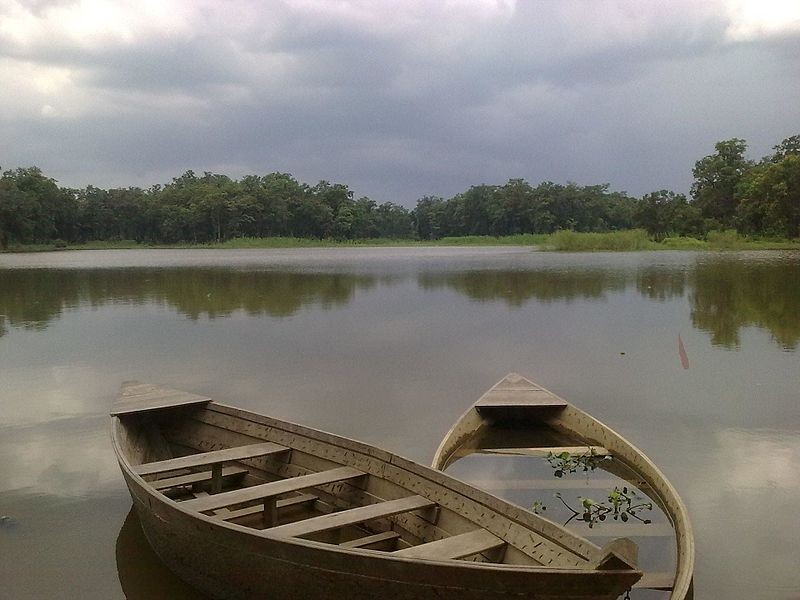
-
About 15 kilometers to the north of Ilam District is Mai Pokhari, a Buddhist and Hindu pilgrimage destination. In 2008, it was proposed as a Ramsar site. This lake is about one kilometer long and 2100 meters above sea level. The Maipokhari Botanical Garden is located close to this lake and is thought to be the home of a rock garden, an orchid house, a greenhouse, and a variety of plants gathered from various parts of eastern Nepal.
This area is home to numerous rare species of plants and animals, including white-rumped vultures, leopard cats, goldfish, water lilies, and other species including orchids and porcupines. The main draw to this location is its calm beauty and luxuriant surroundings in nature. Additionally, this location provides a wide range of activities, such as a breathtaking view of a tea field, a nature hike, a wonderful view of Kanchenjunga, numerous lakes and waterfalls, a trip to numerous nearby temples, and so forth. Every visitor to the Maipokhari lakes in Nepal is mesmerized by the overall scene. Mai Pokhari is one of the most beautiful lakes in Nepal.
Location: Ilam District, Nepal
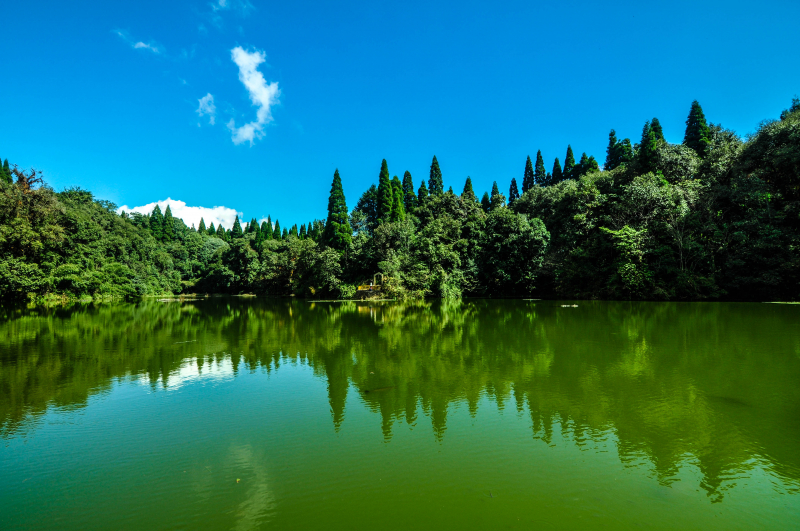
Photo: wikipedia Video: https://www.youtube.com/watch?v=CnzJM3rmfQY












